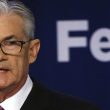by Fidelity Viewpoints
Find out where one Fidelity portfolio manager has found opportunities.
Key takeaways
- While energy prices may have settled from the extreme volatility they experienced at the start of the Russian invasion of Ukraine, they are likely to remain elevated.
- Fidelity portfolio manager Ashley Fernandes says there may be potential opportunities stemming from Europe's long-term pivot away from Russian energy.
- Specific areas he's focusing on include energy producers with long-lived inventories, oil services companies, base metals, and North American fertilizer companies.
To say that it's been a tumultuous year so far for the energy and natural resources sectors would be an understatement.
After taking enormous price swings in the early days and weeks of the Russian invasion of Ukraine, the price of crude oil has shaken off its initial extreme volatility. And while some of the most feared scenarios for global supplies have not come to pass—for example, Russia has not cut off gas supplies to all of Europe (or at least, not yet)—investors, consumers, and companies have settled into a kind of persistent uncertainty over the disruptions the war may bring in the future.
"First and foremost, the war continues to be a dire humanitarian crisis," says Ashley Fernandes, manager of the Fidelity® Natural Resources Fund ( FNARX).
While the war has had stark impacts on the sector in the short term, Fernandes says he's focusing on the intermediate- and long-term resulting trends, which are likely to shape the sector and drive relative performance among natural resources stocks for years to come. Those trends include not only a long-term pivot away from Russia, but also persistent scarcity and a greater focus for many countries on energy security.
Higher prices likely here to stay
After the initial shocks, oil prices have settled into a less volatile, but still elevated, trading range. "The market has kind of adapted to the current constraints created by the war," says Fernandes. He estimates that about 1 million to 2 million barrels of Russian oil supply per day have been disrupted due to sanctions, logistical issues, and voluntary boycotts. Whether or not the worst of the volatility is now behind us really depends on the course events take, he says.
Brent Crude and West Texas Intermediate are each major global benchmarks for the price of oil. Chart shows prices in the spot market. Source: US Energy Information Administration.
While the first price impacts were felt in the crude oil and gas markets, Fernandes says those effects have now rippled into prices for refined products, such as jet fuel and diesel. "European refineries use Russian crude oil and Russian natural gas to create refined products," he explains. Europe is now producing less of these products, which is pressuring prices globally for these crucial inputs to the global economy.
Fernandes says 2 other important forces may also continue to put upward pressure on prices. First, China may eventually reduce COVID-related restrictions, allowing its economy and energy consumption to bounce back. "China has been consuming less, and that has acted as a release valve on the whole global energy supply," he says. Second, Russia's newfound isolation means it likely isn't receiving the Western investments and technology it needs to maintain its production capacity, which could put a lingering dent in its production.
Looking for long-term supplies
Fund top holdings
Top-10 holdings of the Fidelity® Natural Resources Fund ( FNARX) as of March 31, 2022:
- 15.4% – Exxon Mobil Corp. ( XOM)
- 9.9% – Canadian Natural Resources ( CNQ)
- 7.3% – Freeport-McMoRan Inc. ( FCX)
- 6.5% – Hess Corp. ( HES)
- 4.5% – Imperial Oil Ltd. ( IMO)
- 4.2% – Halliburton Co. ( HAL)
- 3.8% – Glencore Plc
- 3.7% – Valero Energy Corp. ( VLO)
- 3.3% – Phillips 66 ( PSX)
- 2.8% – Tourmaline Oil Corp. ( TRMLF)
Rising prices across the board have generally translated into rising stocks across the board. "A rising tide in commodity prices lifts all boats," he says. On a relative basis, companies with more exposure to the US, Canada, and to a lesser extent the UK have performed better, while companies with exposure to Russia have generally performed worse.
But Fernandes is selective in looking for future opportunities. One key theme he's watching is Europe's pivot away from Russian supplies. While Europe will need to rely on multiple strategies to achieve this long-term shift, he believes one such strategy will probably be relying more heavily on US exports.
"Europe is probably going to import a lot more liquefied natural gas from the US," he says. Importantly, unlike the traditional gas form, which generally must be transported through pipelines, the liquefied form can be transported on ships.
Another factor he's weighing is how persistent inflation may affect energy companies. "In an inflationary environment the cost of doing business for everybody goes up," he says, including the cost of locating and tapping new inventory sources.
For that reason, he particularly favors exploration and production companies with deep resource bases and low decline rates (which means how rapidly production from a given location declines after reaching a peak)—in other words, companies that could continue to pump out production for a long time, with minimal additional investment. "If you don't have to replace that inventory in an inflationary environment, you're usually generating a lot more free cash flow for investors," he says.
Examples of companies in the portfolio that fit this profile include Canadian Natural Resources (CNQ), Hess Corp. (HES), Imperial Oil Ltd. (IMO), Tourmaline Oil Corp. (TRMLF), Valero Energy Corp. (VLO), and Antero Resources Corp. (AR).
Europe's long-term diversification
In addition to taking more supplies from the US, Fernandes thinks another strategy Europe will lean on is doubling down on renewables. "Spending on renewables over the next 10 to 15 years will require a lot of copper and nickel," he says. Base metals companies were already poised to benefit from growing demand for electric vehicles. An increased push by Europe to pivot to renewables should only add to that, he says. Portfolio holding Freeport-McMoRan Inc. (FCX), a major global copper supplier, illustrates this investment thesis.
Fernandes is also keeping a close eye on whether and to what extent nuclear energy may play a role in Europe's long-term shifts. While he doesn't think it's a shoo-in for investors in the coming years, he's watching carefully for developments.
Investing in security
Fernandes thinks that a newfound appreciation of energy-supply scarcity may lead governments to start placing a greater focus on energy security. To establish greater security, it's going to take significant new investments in getting energy out of the ground. "The magnitude of spending is just starting to be appreciated," he says.
This increased spending should provide a benefit for oil services companies, he says. These companies provide the essential "plumbing" it takes to produce energy—like the rigs, other equipment, fluids, and technology that go into drilling a well. An example of a portfolio holding that fits this investment profile is Halliburton Co. (HAL), he says.
Ripple effects for fertilizers
Finally, one more key area Fernandes is focusing on is fertilizer markets. There are 3 primary fertilizers used in agriculture around the world: nitrogen, phosphate, and potash. Potash production in Russia and Belarus has been directly impacted by the war. But nitrogen has also been affected, since natural gas is a main input into the production of nitrogen.
Fernandes says that US and Canadian fertilizer companies—which benefit from cheaper inputs than their European counterparts—may stand to benefit. For example, portfolio holding Nutrien (NTR) is a Canadian company that is a significant producer of potash and nitrogen.
To learn more, check out the Fidelity® Natural Resources Fund and its most recent publicly available holdings, or consider evaluating potential investments with our Stock Screener or Exchange-Traded Fund (ETF) Screener. You can also learn more about sector investing and read more recent market insights and commentary from Fidelity's portfolio managers.
Copyright © Fidelity Investments















